Caring for children's things has its own characteristics. Not only his neat appearance, but also the comfort and health of your baby depends on how well the mother launders, strokes and dries her baby’s clothes.

Washing
When a baby is just born, it is prone to many diseases. His skin is very delicate and sensitive, so the baby needs to be dressed in sliders and a blouse only from natural materials so that it does not sweat, does not freeze, and it does not rub, and was sized. For a child of the first month of life, sliders, blouses and other things must be washed at a temperature of 90 degrees. Previously, mothers even boiled the diapers of a newborn and not only them, but also all their underwear, so that no germs and bleach remained in the water.
Underwear for children up to six months old is recommended to be washed manually with baby soap and very good to rinse things under water. The generation of our mothers and grandmothers did not know what a washing machine was, nevertheless they raised us strong and healthy. Do not be lazy to wash the first month with your hands. Wash as needed. After all, you never know how much the baby will need on the day of the sliders.
Young mothers should know that baby diapers, vests, romper suits should be washed at first time only with laundry soap and ironed on both sides. Later, you can get by with one ironing (the first month of life - from two sides, later - from one)
We also read: how and how to wash things for a newborn baby
After six months, you can try washing clothes with powder. You need to start with children’s, hypoallergenic, odorless and watch the baby so that he does not have a rash or irritation on his body. Baby powders are fundamentally different from powders for adults in their composition. The main component of baby powder should be soap. Children's detergent should not include soda and chemical bleaches. The powder should contain no more than 30% phosphate. And ideally, of course, if it is phosphate-free. Mandatory lack of fragrances. It is desirable that the powder does not have pronounced odors, but rather that it is odorless.
If the mother found an allergic reaction on the baby's body, then it is necessary to replace the powder. If there are no problems, you can safely wash things in a typewriter. Of course, without deviating from the general rules for washing. White needs to be washed with white, and colored things with colored ones. It is imperative to wash children's things separately from adults.
Responsibly rinse your clothes, because the more carefully you rinse your clothes, the lower the probability of negative consequences. Many modern washing machines are equipped with a special mode for washing things for babies with an extended rinse interval. If in your washing machine there is no such mode, it is enough to turn on the additional rinse mode after washing. When rinsing manually, it is necessary to change the water several times until it becomes completely transparent. After washing, there should be no smell of powder.
We also read: how to wash children's knitwear
Clothing for the street. How to care for her?
- Overalls. Street clothes are often difficult to wash. The main reason is that it simply may not dry until the next walk. And you don’t have to wash it so often. If dirt remains on the overalls, you can wait until it dries and remove it with a sponge.
- The dirtiest places are usually sleeves and legs. They can be washed and dried with a hairdryer. But there are times when our fidget kids are smeared so that no sponge can help anymore. There is only one way out - washing.
- Mittens or mittens. So that children's gloves do not sit, it is better to wash them in warm water. Never wash in hot water.
- Children's clothes can be from different materials - accordingly, things will require different care. It’s good if mommy knows the materials and knows what kind of care they need. If not, then there are tags on things that will help newly moms to cope. Therefore, do not rush to cut them. And if they cause discomfort to your baby, cut it off. But remember, and better write down the composition of the fabric, the mode and temperature of washing and ironing.
- Before you put on new children's clothing, you must wash it. After all, it is not known where she was before and who else tried on her. It may contain germs and dust, any substances remaining after sewing clothes. You need to wash it separately from other things, because it can be painted and painted with all the other things of the baby.
- After washing, it is recommended to wash clothes made of wool in cold water so that the clothes do not lose their former shape.
How to remove a stain?
As soon as the child has switched to adult food, stains on clothing are normal. Before feeding the baby, it is better to put a bib on it so as not to stain the clothes. If it was not possible to avoid the stains, it is best to remove it with laundry soap (for a better effect, wait until the stain gets wet and spreads out, then safely put things in the machine). When a child grows up, you can use a stain remover. For spot spots, a spray stain remover is perfect. It is enough to process the stain and wash clothes.
There are spots that are very difficult to remove, and some are simply impossible. For example, apple and carrot juice. If you have stained your favorite costume, then figure out how to hide the speck. You can sew on a button or come up with another option, for example, sew a patch. It’s better not to give away children's things to dry cleaning - chemical substances entering the body of a small person can cause an allergic reaction. And environmental dry cleaners are very expensive.
If there are a lot of spots, sometimes it’s easier to say goodbye to your favorite sliders or leave them, but wear only when you eat.
Olga talks about 2 ways to remove stains from children's clothes:
Drying
Previously, pediatricians advised drying clothes on a balcony or street, but this drying option is suitable only for residents of ecologically clean areas: in a village or in a country house, far from factories and highways, pollution and harmful substances from which instantly settle on drying things, but not like not big industrial cities. In this case, clothes should be dried in an apartment on a special dryer, away from dust and dirt, otherwise everything will settle on wet clothes again. If you dry things on the balcony, then only on the glazed.
Many dry clothes in the bathroom.This is permissible, but care must be taken to ensure that mold does not form on the walls, because of it various diseases can worsen in infants.
[sc: rsa]
In winter, the baby’s things can be dried on a battery, firstly, they will dry out faster, and secondly, if the apartment has dry air, moisture, evaporating from wet clothes, will help moisturize it. The battery should be clean and not rusty.
The most basic rule for preserving the original form of clothing is not to squeeze it hard, otherwise you risk stretching the fabric. Also, do not hang wet clothes to dry on a rope, especially for woolen and knitwear. If you wash by hand, then things must first be dried (for example, first spread out on a terry towel, the towel will absorb excess water like a sponge), and then put on a dry, even surface (on a table). Thus, the clothes will dry without changing their previous shape. If you wash in a washing machine, then the spin should be gentle. So that the thing does not deform, only semi-dry clothes can be hung on a rope or dryer.
Ironing
For children’s clothing, ironing is a particularly important hygienic need. For the purpose of additional disinfection, the child’s things must be ironed carefully, and ideally steamed with an iron. In the first month after birth, when the umbilical wound has not yet healed, it is necessary to iron things from two parties. This will protect your child from getting inside the infection. Thanks to ironing, the seams on the clothes become softer, which is much more comfortable for delicate baby skin.
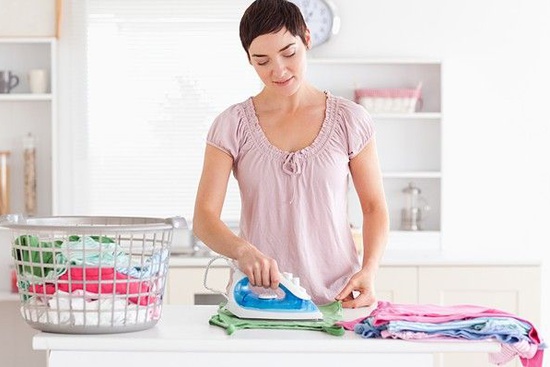
- Woolen and knitted items can not be ironed at all. It is enough to dry them correctly. If, nevertheless, things remain wrinkled, then you need to iron in a special mode for wool at a minimum temperature;
- Natural cotton items are recommended to be ironed slightly damp;
- Velor is advised to iron on weight with steam. After ironing, the clothes are allowed to dry completely;
- Openwork must be ironed from the inside through gauze;
- Viscose must be ironed without spraying and at a temperature of 110 degrees;
- A synthetic winterizer is best ironed with a slightly heated iron.
READ ALSO: How long do you need to iron clothes (diapers) for a newborn? And do I need to iron them? -https://kid.htgetrid.com/en/eto-polezno-znat/kak-dolgo-nuzhno-gladit-bele-pelenki-dlya-novorozhdennogo.html
Storage
Surely one of you has come across a situation where you have to hand out things for children that are already small because of lack of storage space, although at heart it is a pity to part with them. Perhaps you are planning a replenishment of your family in the near future, or your next of kin is planning to give birth to a baby in a couple of years.
- Special vacuum bags and vacuum cleaner. These bags save a lot of space, several large boxes of clothes can turn into two neat “pancakes” and can be safely stored on the far shelf, without disturbing anyone. The principle is simple: things are folded into packages from which air is completely pumped out with a vacuum cleaner. For these purposes, you can use ordinary dense packets, but there is a chance that air will nevertheless leak into them, and they will gradually increase in volume;
- Before sending clothes for storage, you must first wash, dry, iron them (otherwise you risk getting a hotbed of germs, moths and other troubles). Do not forget to inspect things before sending them to storage, because most of the children's things at the end of the season may have to be sent not to the closet, but to the bin;
- Do not hang fur products next to delicate things. An ideal option for storing any clothes is a cover;
- If the child needs to appear at the matinee in a beautiful and crumpled suit, then for such a case, a portlet is perfect. In it, clothes can be folded in half for easy transportation. In such a case, clothes perfectly retain their shape.
Organization and storage of children's things

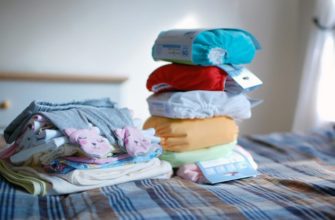

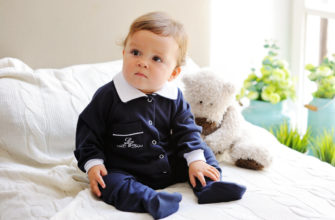
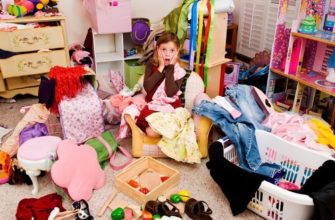
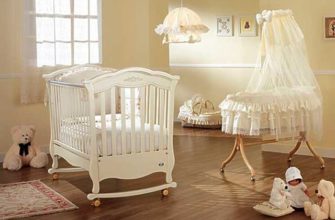
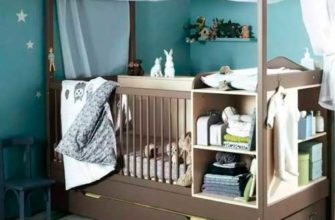
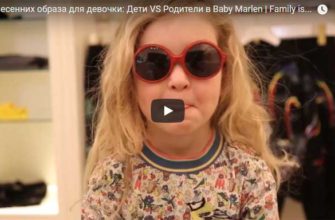
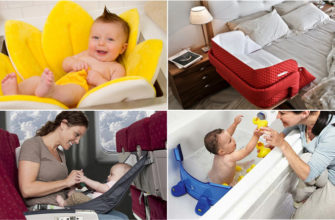
I ironed my baby’s clothes every time after washing on both sides for only a couple of months and I started to wash immediately with baby powder, an eared or mustached nanny, and so on ... there were no allergies. But if the baby has very sensitive skin, then of course you need to do it all more carefully)
The child is 7 months old. I still iron them after washing children's things. I wash only with baby powders and separately from other things, basically I choose a delicate wash or quick (30 min) if you just need to refresh things.